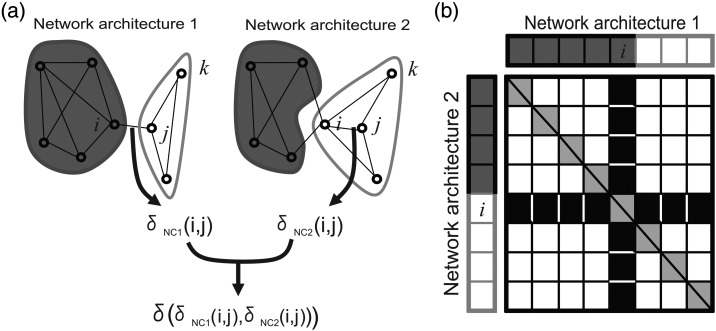Figure 3.
Definition of Similarity index. The main purpose of the Similarity index is to quantify the extent to which 2 community architectures are similar. (a) An example comparing 2 network architectures, 1 and 2. In this case, δNC1(i,j) = 0 because nodes i and j participate in 2 different communities in network architecture 1, and δNC2(i,j) = 1 because nodes i and j participate in 2 different communities in network architecture 2. Therefore, δ(δNC1(i,j),δNC2(i,j)) is 0. However, between nodes j and k, δ(δNC1(i,j),δNC2(i,j)) is 1 because nodes j and k participate in the same community in both network architectures. By summing all pairs of nodes i and j, we can obtain the final value of the Similarity index. (b) A scheme of how to calculate the Similarity index. The x-axis represents network architecture 1, and the y-axis represents network architecture 2. Colors (dark gray or white) correspond to communities shown in (a). Regions where δNC1(i,j) = δNC2(i,j) are shown as white boxes, and regions where δNC1(i,j)≠δNC2(i,j) are shown as black boxes. The diagonal components would be self-connections, and are not considered in calculating the Similarity index. Graphically, the Similarity index is defined as (total number of white boxes except diagonal components)/(total number of boxes except diagonal components).

